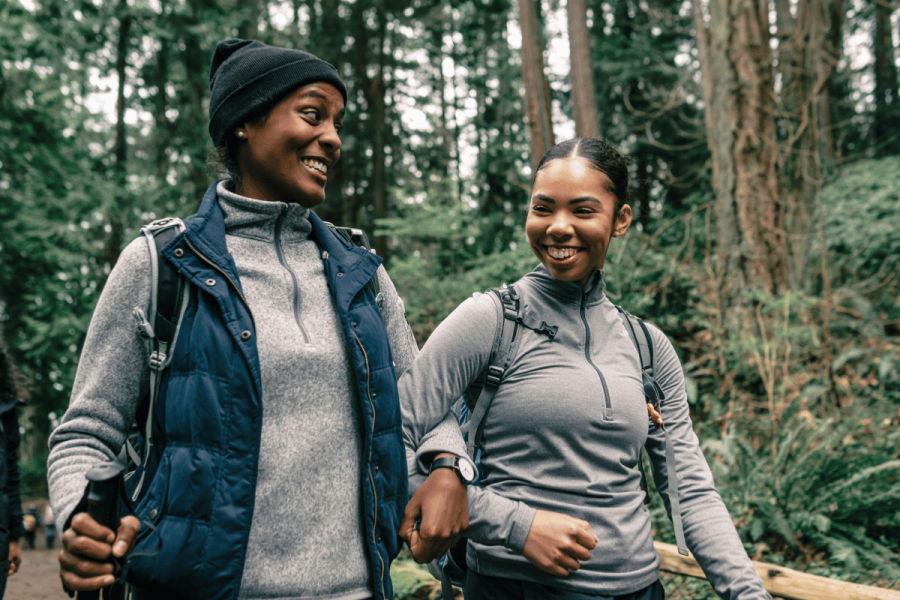You don’t have to do a long-distance yomp for walking to be effective. Heed these training tips to really boost your walking fitness levels, says Women’s Fitness editor Sarah Sellens.
Words: Sarah Sellens. Images: Pexels
We all have our own natural pace and speed of walking. But, by upping the speed and varying the way you walk, you can turn each stride you take into a calorie-burning move. Focus on fat-burning, toning your thighs or tightening your tum – read on for tips on all these and how to get the best and fastest results from your walking workouts.
Q. How far do I need to walk?
A. The standard recommendation is that we aim for 10,000 steps a day to reap health rewards. This may sound like a lot, but during a 30-minute walk, you can easily take anywhere between 2,000-6,000 steps and you’ll still have the rest of the day to build up to your 10,000-step goal.
A good starting point to getting fitter is to establish the average number of steps you currently take a day. Do this by wearing a pedometer for three days. Record the total number of steps you’ve walked at the end of each day, add them up and divide by three. Here’s what your total indicates:
3,000 steps a day – Sedentary. If you’re a complete beginner to fitness, building up from this point will help you start to improve your fitness.
6,000 steps a day – Somewhat active. This is a level of walking that will help improve your health and prevent you from gaining excess weight.
10,000+ steps a day – Active. You’re on target to stay fit and keep super healthy.
Once you’ve established your baseline number of steps, you can build up your total gradually. Try adding 500 steps a week by building a bit more time into your day for walking – you’ll be amazed how quickly the steps add up. If you want to aim for a distance goal, a great walking distance during the week is about two miles. Then, at the weekend, you can head out to tackle longer distances.
Increase your speed
The easiest way to improve your walking pace is to set yourself a time trial. Find a small circular walk route and, once a month, challenge yourself to walk it as fast as you can. Record your time and track your progress.
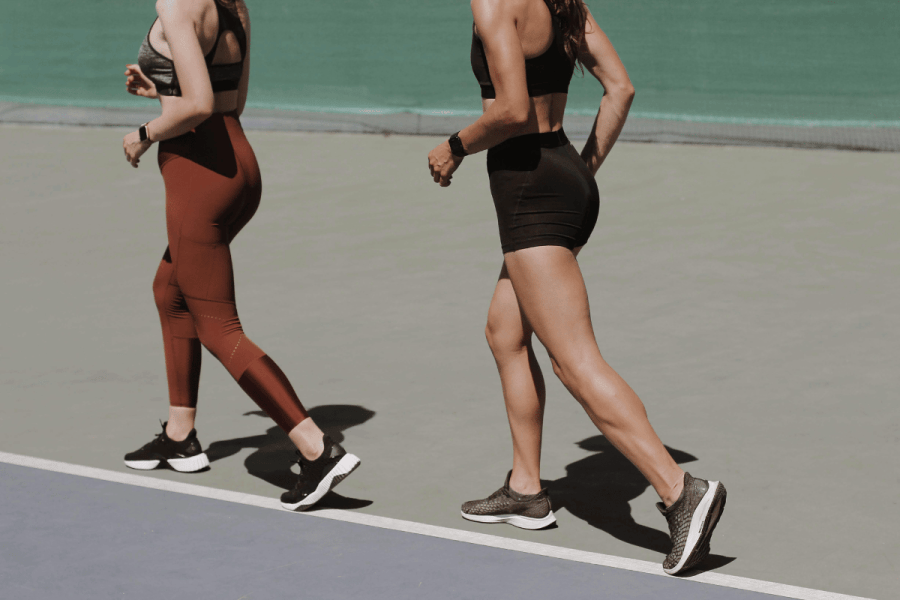
Q. How fast do I need to walk?
A. To walk into shape, you need to aim to be walking at between four and five and a half miles per hour. Here’s an easy guide to walking paces:
Stroll pace
This is the pace most of us walk at throughout the day – around the house and office for instance. On average, we walk at about two miles an hour. So, walking at this pace, it would take you about 30 minutes to walk one mile.
Average pace
This is the speed most of us walk if we are outdoors, walking to the office or out shopping, for instance. It’s a bit faster – around three miles an hour. So, walking at this pace, it would take 20 minutes to walk one mile.
Walk-slim pace
This faster pace naturally engages your arms. The faster you walk, the more you swing your arms which helps increase your speed.
Walk-slim pace is approximately four to five and a half miles an hour. Walking at this pace, you’ll complete a mile in about 12-14 minutes. This difference in intensity and effort pays you a big reward, giving you all the weight-loss and toning benefits. As you get fitter, you’ll find your speed will increase. The harder you work, the better the results!
Try to walk as fast as you can without being so breathless you can’t hold a conversation – this is sometimes called the “talk test”. Walking should be an aerobic exercise to ensure your muscles have sufficient oxygen. If you’re gasping for breath, you’re doing anaerobic exercise – slow down a little.
Interval walking for fitness
Introducing intervals – bursts of faster walking – into your sessions helps boost your fitness and burn more calories. For your faster intervals, you need to be walking as fast as you can without breaking into a jog.
For more quick fitness, try these 10 quick and easy ‘exercise snacks‘ to add into your daily routines.

Q. How often should I walk to increase my fitness?
A. You should be aiming to walk whenever you can. As well as your walking workouts, try to incorporate as much walking into your life as possible. Walk to the shops, walk the kids to school, or take a break from your desk and walk at lunchtime – just increase your normal speed to help burn calories.
You can log your walks into a training plan. But as walking is a safe, low-impact exercise, it’s great to walk on other days too, if you feel the urge to get out there.
Cross country
Mix up the terrains you walk on – grass, tarmac or even sand. You’ll work different muscles and at different intensities.
Q. Where should I walk?
A. Every environment offers a different benefit. Hilly terrain is great as it ups the intensity and gives your legs and bottom a great workout. Cross country is another great challenge as the mixture of terrains means you engage more muscles. Climbing over stiles and gates gives you that extra calorie boost, too.
Beach walking is another great challenge as you have to make more effort moving forwards as the sand doesn’t supply you with a solid foundation from which to propel your heel forwards.
In fact, walking on a sandy beach burns approximately 100 calories per mile. So even while on your summer holiday you can stick to your walking plan and keep your mind and body healthy.
Closer to home, pavements are a good surface for picking up your speed. Ideally, try to incorporate a range of terrains into your regular walks.
Visit womensfitness.co.uk
Best pre- and post-walk stretches for better fitness
If you’re heading out for a brisk walk, try these stretches before and after to make sure you stay supple and don’t feel sore the next day, says PT Chloe Thomas.
Before you walk
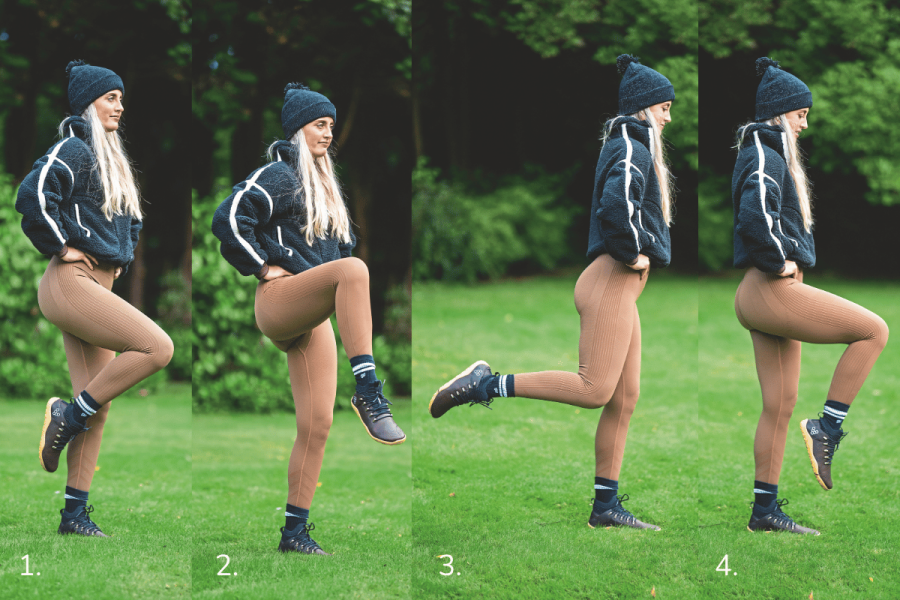
Standing leg circles
- Stand tall with your core engaged and hands on your hips (or hold onto a support for balance).
- Lift one leg slightly off the ground and draw small circles with your foot, moving from the hip in a full range of motion.
- Perform circles in one direction, then reverse before switching legs.
- Repeat on the other side.
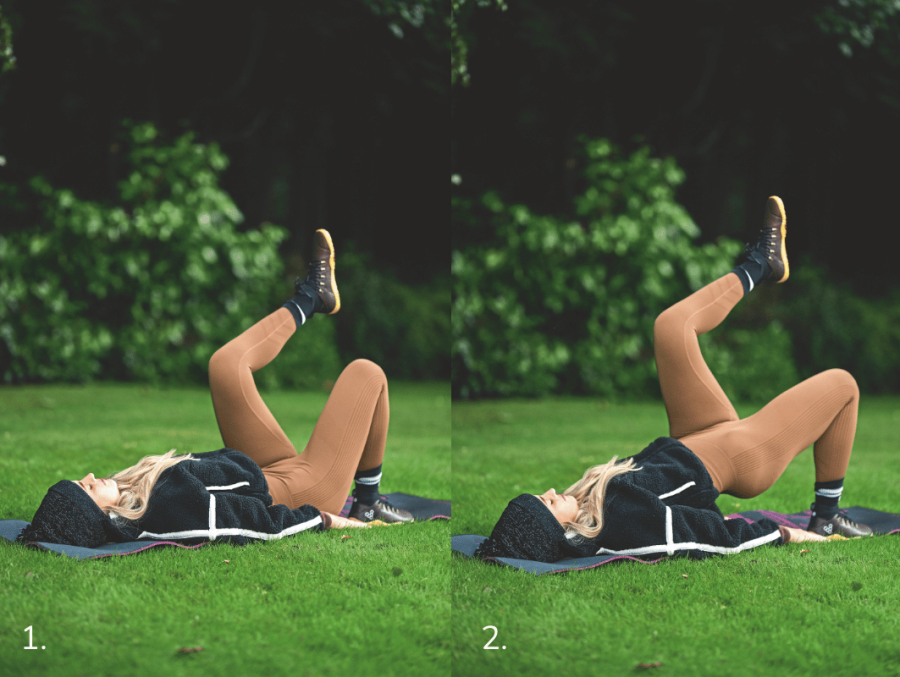
Single leg glute bridge
- Repeat on the other side.
- Lie on your back with one foot planted and the other leg extended above your hips.
- Press through your planted heel and lift your hips, squeezing glutes at the top. Keep core tight.
- Lower slowly and repeat 8-10 times.
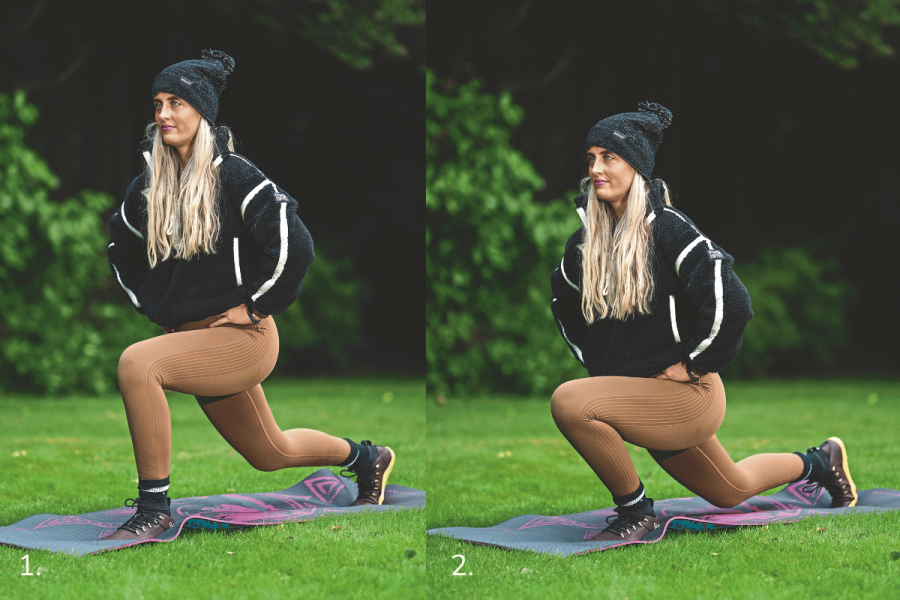
Deep Lunge
- Step into a forward lunge, keeping your front foot flat and back leg extended.
- Gently push your front knee forward, keeping the heel down to stretch the ankle and hip.
- Return to standing and switch legs, focusing on controlled movement.
Find out what stretches to do post-walk to avoid injury, and more tips on how to make the most of your walk, here.

